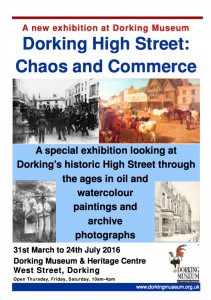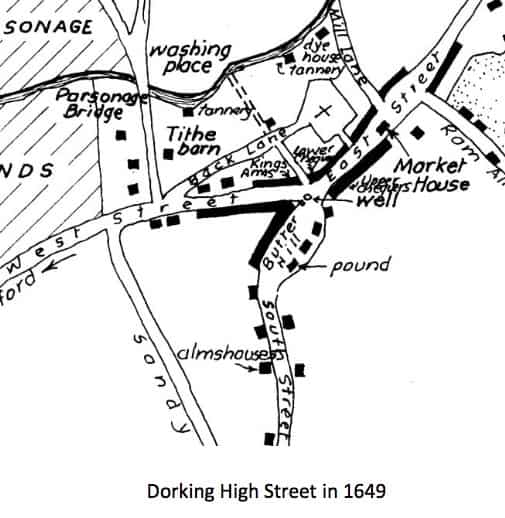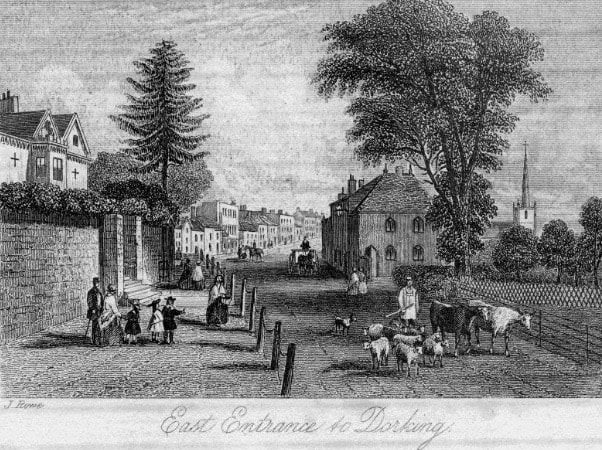
- Commerce: see the development of the town’s trade, the buildings that have disappeared – like the old Market Hall – and street markets, offering the famous Dorking chickens and other livestock.
- We are displaying a well-known painting of Market Day 1895 by noted local artist, Charles Collins, on loan for the exhibition.
- Chaos is seen in images from the town’s Shrove Tuesday football games of the 19th century – and, displayed for the first time, an original football standard of 1885.

Dorking’s High Street was originally called East Street and formed part of the key east-west route through the town. People gathered there for many purposes: it was a market, a stage coach route, a football pitch and a place for business and pleasure.
The first reference to Dorking market was in 1241 but there has been a market in the town since Anglo-Saxon times. No charter for it has ever been found but it was generally held on Thursdays and became primarily a stock and corn market. The poultry market was located on Butter Hill and this and the well at Pump Corner were an obvious place to meet. By the 16th century, a market house similar to that still standing in Reigate was situated at the western end of the High Street.
During the 18th and early 19th centuries, stage coaches stopped at the White Horse Inn and the Red Lion, on their way between London and the south coast, and trade began to prosper.

The High Street was also residential and in the 1660s the large and handsome Dutch House was built. People lived over the shop and also in the numerous lanes off from the High Street, most of which were redeveloped in the 20th century. The east end of the street remained residential for longer and the impressive Shrub Hill House, begun about 1650, stood behind its high brick wall until 1880. The range of traders in the town satisfied all the needs of the population.
All this commercial and residential activity was disrupted by the traditional Shrove Tuesday football match. It began
at St Martin’s church and continued all afternoon along the High Street. Street football had actually been illegal since 1818 but it continued in Dorking until 1897 when a ban by Surrey County Council was enforced. Respectable shopkeepers supported the ban but members of Dorking Urban District Council stood up for the game which was extinct by 1905.
The market house was demolished in 1813 and the stock market had mixed fortunes in this area of arable farming. A strong revival started in 1886 when the market was run on alternate weeks by two local auctioneers: Crows and Whites. It continued in the High Street until 1926, when it was moved to the former yard of the Three Tuns; there it stayed, also acting as a carpark, until the arrival of St Martin’s Walk.


